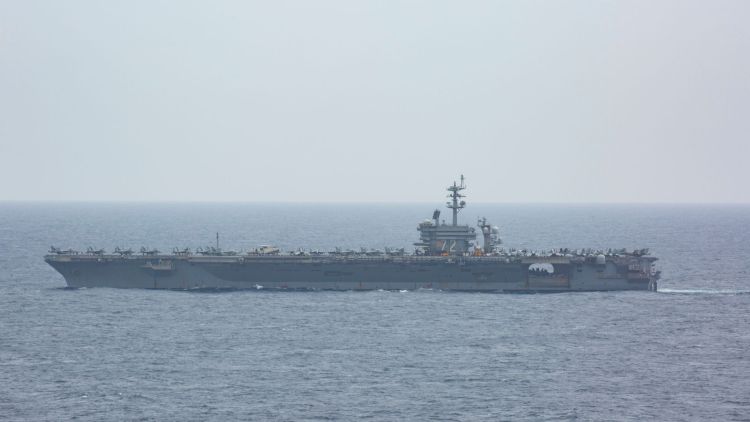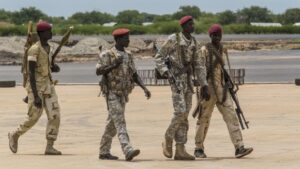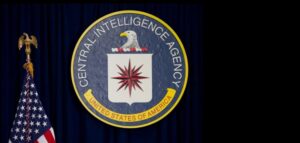In a move that signals just how serious things are getting in the Middle East, Uncle Sam is sending several thousand more troops and fighter aircraft to the region.
—a response that comes after Israel ramped up its military strikes against Hezbollah and following the assassination of the group’s leader, Hassan Nasrallah, last week.
If you’ve been following the news, you know tensions in the region have been steadily building, and now it seems we’re at a dangerous boiling point.
But what exactly does this deployment mean, and why should we care? Let’s break it down.
Why the US Is Sending More Troops
At its core, this troop deployment is about deterring aggression and keeping the situation from spiraling out of control.
Defense Secretary Lloyd Austin III made it clear that the US wants to prevent Iran and its proxies, including Hezbollah, from taking advantage of the turmoil.
“Secretary Austin stressed that the United States is determined to prevent Iran and Iranian-backed partners and proxies from exploiting the situation or expanding the conflict,” the statement reads. “Austin made clear that should Iran, its partners, or its proxies use this moment to target American personnel or interests in the region, the United States will take every necessary measure to defend our people.”— Department of Defense
In short, If Iran or its allies target US personnel or interests, the US is ready to respond—and swiftly.
In a move that signals just how serious things are getting in the Middle East, Uncle Sam is sending several thousand more troops and fighter aircraft to the region.
—a response that comes after Israel ramped up its military strikes against Hezbollah and following the assassination of the group’s leader, Hassan Nasrallah, last week.
If you’ve been following the news, you know tensions in the region have been steadily building, and now it seems we’re at a dangerous boiling point.
But what exactly does this deployment mean, and why should we care? Let’s break it down.
Why the US Is Sending More Troops
At its core, this troop deployment is about deterring aggression and keeping the situation from spiraling out of control.
Defense Secretary Lloyd Austin III made it clear that the US wants to prevent Iran and its proxies, including Hezbollah, from taking advantage of the turmoil.
“Secretary Austin stressed that the United States is determined to prevent Iran and Iranian-backed partners and proxies from exploiting the situation or expanding the conflict,” the statement reads. “Austin made clear that should Iran, its partners, or its proxies use this moment to target American personnel or interests in the region, the United States will take every necessary measure to defend our people.”— Department of Defense
In short, If Iran or its allies target US personnel or interests, the US is ready to respond—and swiftly.
Austin’s decision includes keeping the USS Abraham Lincoln carrier strike group in the region past its scheduled rotation, along with sending more fighter jets, like the F-16, F-15E, and A-10, to bolster the US presence.
These aircraft and the accompanying troops are there to ensure that if things get worse, the US has the ability to defend itself and its allies.
Ongoing Clash: Israel vs. Hezbollah
So, why now? It all comes down to Israel’s increasing military actions against Hezbollah, the militant group based in Lebanon.
Things escalated dramatically after Israel’s targeted strike that killed Hassan Nasrallah, Hezbollah’s leader.
That move has Israel preparing for a potential ground incursion into Lebanon, which could ignite a much larger conflict in the region.
Hezbollah isn’t a small-time player. They’ve been a major force in Lebanon and are backed by Iran, which makes this situation even more volatile.
Iran has strong influence over several militias and proxy groups in the Middle East, meaning if one of its allies, like Hezbollah, is threatened, Iran could retaliate.
The US wants to make sure it’s prepared if Iran decides to take any action, whether directly or through its network of proxies.
“Secretary Austin and department leaders remain focused on the protection of US citizens and forces in the region, the defense of Israel, and the de-escalation of the situation through deterrence and diplomacy,” Deputy Pentagon Press Secretary Sabrina Singh told reporters on Monday, September 30.
What Does This Mean for US Forces?
It’s not just about fighter jets and aircraft carriers.
The US has a sizable footprint in the Middle East, and ensuring the safety of American troops and civilians is a top priority.
Austin and his team at the Pentagon are reinforcing air defense systems across the region, ensuring US forces are protected from missile or drone attacks. They’ve also increased the readiness of other forces, ready to deploy at a moment’s notice if things escalate further.
While we don’t know the exact number of troops being sent, Pentagon officials are describing the addition as a “few thousand.”
The key here is that this isn’t a complete overhaul of US forces in the region—it’s more about adding layers of protection and deterrence.
The Threat of a Larger Conflict
One of the big concerns right now is that this situation could expand into a broader conflict.
After all, the Middle East has long been a hotbed of geopolitical tensions, and even a small spark can lead to a much larger fire.
For Israel, the stakes are high, and their strikes against Hezbollah are meant to neutralize a long-standing threat. But with Hezbollah’s deep ties to Iran, any retaliation from Tehran could pull other countries into the fray.
The US knows this, which is why they’re not taking any chances.
Pentagon Press Secretary Singh made it clear that the US is watching Iran closely, monitoring their rhetoric and actions.
“The Secretary also increased the readiness of additional US forces to deploy, elevating our preparedness to respond to various contingencies and [the Defense Department] maintains robust and integrated air defense capabilities across the Middle East region, ensuring the protection of US forces operating in the region.”— Pentagon spokesperson Singh
It’s a tense situation, and while the US isn’t predicting an imminent retaliation from Iran or Hezbollah, they’re preparing for all contingencies.
What’s Next?
The US has a tricky balancing act to maintain. On the one hand, it’s important to support Israel’s right to defend itself against Hezbollah and other militant groups. On the other hand, the US wants to avoid a full-blown conflict with Iran, which could destabilize the entire region even further.
President Joe Biden has also weighed in, calling Nasrallah’s death “a measure of justice” for his involvement in various attacks over the years.
Biden has underscored that the US will stand by its allies while also pushing for de-escalation through diplomacy.
The bottom line is that the situation in the Middle East is delicate, and the US is walking a fine line between showing strength and avoiding further conflict.
By sending more troops and aircraft, the message is clear: the US is ready to defend itself and its allies, but it’s also hoping to prevent things from getting worse.
Final Thoughts
The US sending more troops and fighter jets to the Middle East reminds us that tensions in the region are far from over. While the hope is to keep things contained, the reality is that anything could happen.
As Israel and Hezbollah continue their deadly back-and-forth, the US is preparing for the possibility of a larger conflict involving Iran and its allies.
All eyes are on the Middle East, and the world is waiting to see how this will unfold. It’s a complex situation with no easy solutions.
—
Disclaimer: SOFREP utilizes AI for image generation and article research. Occasionally, it’s like handing a chimpanzee the keys to your liquor cabinet. It’s not always perfect and if a mistake is made, we own up to it full stop. In a world where information comes at us in tidal waves, it is an important tool that helps us sift through the brass for live rounds.



